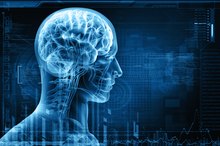Adolescent Learning Styles
Learning styles are simply how people process information. Some people prefer a quiet room to read, others learn by doing, others learn best in groups. When working with teenagers, it is beneficial to understand how the adolescent brain differs from the adult brain and learning styles that typically work for teens.
Adolescent Brains
Adolescent brains are still developing. Early adolescence is a time of increased production of gray matter in the brain. As the teaching experts at the Sun Protection Outreach Teaching by Students explain, gray matter is responsible for processing information 1. That and other types of brain development are not complete until age 25. Therefore, adolescent brains do not make the same connections as adult brains, and adolescent thinking and learning styles are unique to adolescents.
- Adolescent brains are still developing.
- As the teaching experts at the Sun Protection Outreach Teaching by Students explain, gray matter is responsible for processing information 1.
Sound
Children Vs. Adult Learning
Learn More
A study conducted at Mid Sweden University, Sweden, and published in the Institute for Learning Styles Journal in 2011 compared and evaluated the learning styles of adolescents in academic programs, adolescents in vocational training programs, and all of their teachers. While adults sometimes prefer to work in quiet rooms, all of the adolescents in this study preferred some degree of sound in the room while they were working. This may help explain why teens often play music while doing their homework.
Emotion
Emotion drives motivation and learning in adolescents. The addition of emotion in a presentation or lesson plan sometimes helps teenage students remember. At SPOTS, they are quick to point out that humor is positive but sarcasm is negative, and negative emotion will prevent learning. Positive jokes that do not make the student feel self-conscious or threatened heighten the learning experience.
- Emotion drives motivation and learning in adolescents.
- Positive jokes that do not make the student feel self-conscious or threatened heighten the learning experience.
Time of Day
Good Manners for Teenagers
Learn More
Another finding in the Swedish study was that while teachers are generally morning people, adolescents seem to pay the most attention and are motivated to do their work in the early afternoon. This afternoon learning style is consistent with the teenage years; younger children and adults work better in the morning than do adolescents.
Visual
Adolescents are not the only age group that learns well visually, but according to both the Swedish study and SPOTS, adults are better at learning via listening than teenagers. In general, adolescents learn well when presented with graphics and manipulatives. Seeing and doing are important aspects of adolescent learning styles.
Related Articles
References
- Sun Protection Outreach Teaching by Students: The Adolescent Brain - Learning Strategies and Teaching Tips
- Draganski B, Gaser C, Busch V, Schuierer G, Bogdahn U, May A. Neuroplasticity: changes in grey matter induced by training. Nature. 2004;427(6972):311-2. doi:10.1038/427311a
- Krasnova TN, Samokhodskaya LM, Ivanitsky LV, et al. [Impact of interleukin-10 and interleukin-28 gene polymorphisms on the development and course of lupus nephritis]. Ter Arkh. 2015;87(6):40-44. doi:10.1080/00094056.2007.10522940
- Warriner AB, Humphreys KR. Learning to fail: reoccurring tip-of-the-tongue states. Q J Exp Psychol (Hove). 2008;61(4):535-42. doi:10.1080/17470210701728867
- Chan JC, Mcdermott KB, Roediger HL. Retrieval-induced facilitation: initially nontested material can benefit from prior testing of related material. J Exp Psychol Gen. 2006;135(4):553-71. doi:10.1037/0096-3445.135.4.553
- Rubinstein JS, Meyer DE, Evans JE. Executive control of cognitive processes in task switching. J Exp Psychol Hum Percept Perform. 2001;27(4):763-97. doi:10.1037//0096-1523.27.4.763
- Kirschner, P. Stop propagating the learning styles myth. Computers & Education. 2017. 106:166-171. doi:10.1016/j.compedu.2016.12.006
- May, K., Elder, A. Efficient, helpful, or distracting? A literature review of media multitasking in relation to academic performance. International Journal of Educational Technology in Higher Education. 2018.15(13) doi:
- Mazza, S., Gerbier, E., G, MP., Kasikci, Z., Joenig, O., Toppino, T., Magnin, M. Relearn Faster and Retain Longer: Along With Practice, Sleep Makes Perfect. Psychological Science. 2016. doi:10.1177/0956797616659930
- Mueller, P., Oppenheimer, D. The Pen Is Mightier Than the Keyboard: Advantages of Longhand Over Laptop Note Taking. Psychological Science. 2014. doi:10.1177/0956797614524581
- Chan, J.C., McDermott, K.B., & Roediger, H.L. Retrieval-induced facilitation. Journal of Experimental Psychology: General. 2007;135(4):553-571.
- Rubinstein, Joshua S.; Meyer, David E.; Evans, Jeffrey E. Journal of Experimental Psychology: Human Perception and Performance. 27(4), 763-797.
- Willis, J. Brain-based teaching strategies for improving students' memory, learning, and test-taking success.(Review of Research). Childhood Education. 2008;83(5):31-316.
Writer Bio
Samantha Hanly is an organic vegetable gardener, greenhouse gardener and home canner. She grows a substantial portion of her family's food every year. After receiving her bachelor's degree, Hanly embarked on a career teaching dramatic arts, arts and crafts, and languages. She became a professional writer in 2000, writing curricula for use in classrooms and libraries.









